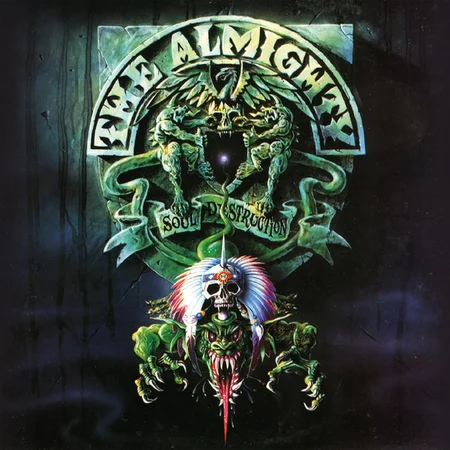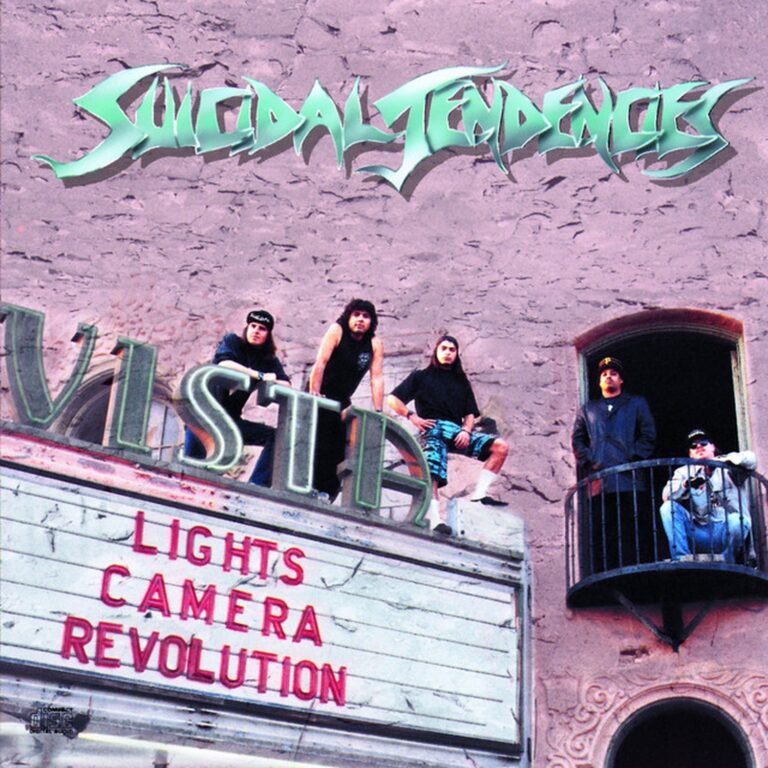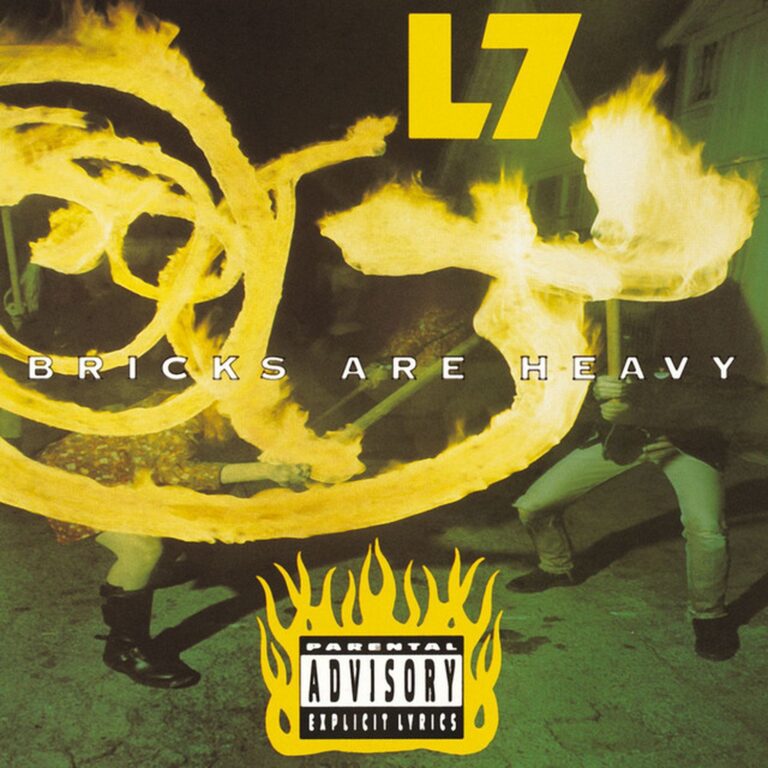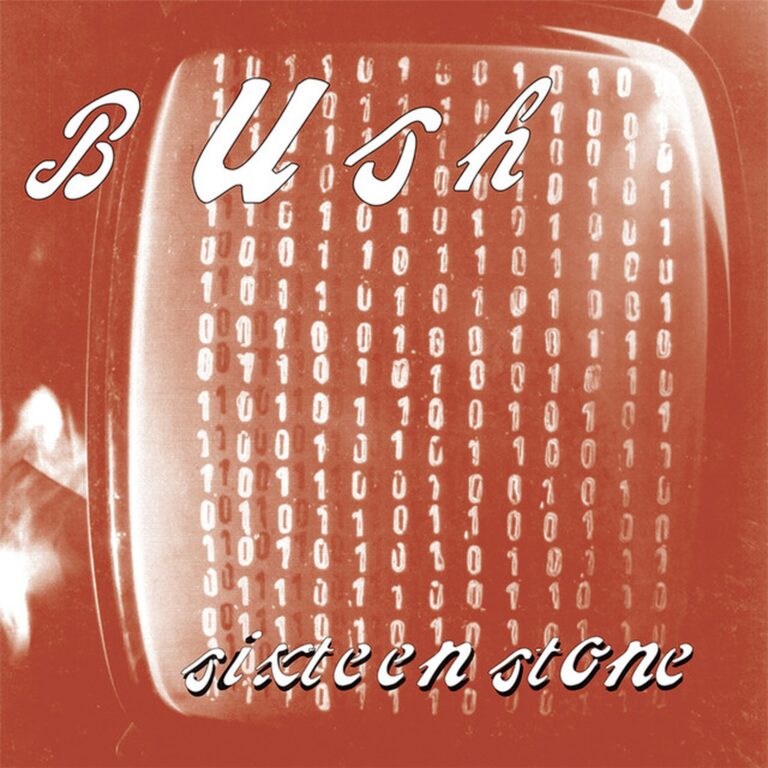
Soul Destruction by The Almighty: A Landmark in British Rock
Raw, rebellious, and bursting with the energy of a band ready to make their mark, Soul Destruction by The Almighty stands as a bold statement from the early 1990s. Released at a time when heavy music was shifting and the British scene was alive with possibility, this album captured the heart of hard rock and heavy metal fans. Today, it remains a powerful reminder of what happens when a band pushes creative boundaries without losing sight of their roots.
In this article, I’ll take you through every detail of Soul Destruction. We’ll start with the album’s background and explore the band’s journey leading up to its creation. Then, we’ll delve into the recording process, discuss its commercial performance, and break down each track and its meaning. You’ll also find stories from the road, the album’s legacy, five key facts, and a review of its critical reception. Finally, we’ll examine what came next for The Almighty and look at any remasters or reissues. If you want the full story of this landmark record, you’re in the right place.
| Attribute | Details |
|---|---|
| Release date | 30 March 1991 |
| Album title | Soul Destruction |
| Genre | Hard Rock, Heavy Metal |
| Total runtime | 58:34 |
| Number of tracks | 12 |
| Record label | Polydor Records |
| Recording studio | Trident II Studios, London |
| Producer(s) | Andy Taylor |
When Soul Destruction arrived, it made an immediate impact. It peaked at number 22 on the UK album charts, which was a strong showing for a band still early in their career. The album’s blend of punk attitude and metal power drew praise from critics and fans alike. As frontman Ricky Warwick explained, “The lyrics are about hate, love, religion, and sex. That’s what makes us human.” The band’s honesty and energy still resonate today, and their influence can be traced through later generations of rock and metal artists.
Producer Andy Taylor brought a unique perspective, having made his name with Duran Duran. Warwick later said, “Andy had a rock attitude, and he wanted to make a bombastic, in-your-face rock record. He was the right man for the job.” That approach helped shape the album’s sound and ensured its place in British rock history.
The Genesis of “Soul Destruction”
To understand Soul Destruction, you have to picture the musical landscape of late 1990. Grunge was on the rise in America, but in the UK, hard rock and metal still ruled. The Almighty, hailing from Glasgow, had already made waves with their debut, Blood, Fire & Love. That album fused punk energy with heavy riffs, drawing comparisons to The Cult and AC/DC. The band’s live shows were wild and raw, and their growing reputation caught the attention of Polydor Records.
After signing to Polydor in 1989, The Almighty moved quickly. They released their debut to positive reviews and followed it up with a live album, Blood, Fire & Live. By the time they began work on Soul Destruction, they were a tight unit with a clear vision. Ricky Warwick handled vocals and guitar, Stump Munroe was on drums, Floyd London played bass, and Tantrum (Andy McCafferty) brought his unique style to lead guitar. The chemistry between these four was key to the album’s sound.
Not only did the core members shape the music, but the songwriting credits also reflect outside influences. Del James, known for his work with Guns N’ Roses, contributed to several tracks. The band financed the recording through their deal with Polydor, which offered a healthy budget by early 90s standards. Still, the band faced the usual pressures—deadlines, creative arguments, and the need to live up to growing expectations.
Here’s a detailed look at the band’s lineup and roles during the making of Soul Destruction:
| Band Member | Instrument / Role |
|---|---|
| Ricky Warwick | Vocals, Rhythm Guitar, Lead Songwriter |
| Stump Munroe | Drums, Backing Vocals |
| Floyd London | Bass, Backing Vocals, Co-songwriter |
| Tantrum (Andy McCafferty) | Lead Guitar, Backing Vocals, Co-songwriter |
The album’s title, Soul Destruction, reflected the record’s themes—conflict, desire, and the darker side of human nature. Warwick later said, “We wanted to capture the energy and honesty of our live shows.” The cover art, designed by Koot, shows a stark, rebellious image that matches the album’s sound. Koot’s work had a reputation for bold, eye-catching designs, and this piece is no exception. The band was deeply involved in the artwork, wanting it to feel like an extension of the music.
In addition, the recording costs were fully covered by Polydor. While the exact budget hasn’t been published, industry standards at the time suggest it would have been in the range of tens of thousands of pounds. The band faced financial pressures, but their label’s support allowed them to experiment and refine their sound without compromise. That freedom is clear in the finished album.
Recording Process
Recording for Soul Destruction began in December 1990 at Trident II Studios, London. The sessions continued into January 1991. Trident II was known for its high-end gear and comfortable, creative environment. Many legendary albums had been made there, and The Almighty were keen to make the most of the studio’s capabilities. Producer Andy Taylor, famous for his work with Duran Duran and Power Station, brought a different energy. He aimed for a polished sound but kept the band’s rawness intact.
Adrian Bushby handled the engineering, with Matt Sime assisting. Bushby would later work with bands like Foo Fighters and Muse, but at this point, he was building his reputation. The team used some of the best equipment available at the time. For example, they likely used Neumann U87 microphones for vocals and guitar amps, an SSL 4000 series mixing desk for tracking and mixing, and UREI 1176 compressors to control dynamics. Warwick and Tantrum favoured Gibson Les Paul guitars, running through Marshall JCM800 amplifiers, which helped define the album’s biting tone.
Despite the resources, the sessions weren’t always smooth. The band faced time constraints and the usual creative disagreements, but these challenges only seemed to push them harder. According to interviews, Taylor encouraged the group to embrace their instincts. As Warwick put it, “Andy just wanted us to go for it—no second-guessing.” That approach paid off in the finished sound.
Here’s a breakdown of the likely hardware and studio equipment used during the recording of Soul Destruction:
| Hardware / Instrument | Details / Studio Use |
|---|---|
| Neumann U87 Microphones | Vocals, Guitar Amps |
| SSL 4000 Series Mixing Desk | Recording and Mixing |
| UREI 1176 Compressors | Dynamic Control on Vocals and Drums |
| Gibson Les Paul Guitars | Lead and Rhythm Guitars |
| Marshall JCM800 Amplifiers | Guitar Amplification |
| Assorted Drum Kits | Likely Ludwig or Tama, standard for the era |
Producer Andy Taylor’s previous experience brought a new dimension to the album. Before Soul Destruction, Taylor had produced and played on records for Duran Duran and Power Station. He was keen to prove his rock credentials. In interviews, Warwick recalled, “People thought Andy was just a pop guy, but he loved his rock music. He knew what we wanted.”
To show Taylor’s work in context, here’s a table of albums he produced:
| Producer | Artist | Album | Year |
|---|---|---|---|
| Andy Taylor | Duran Duran | Seven and the Ragged Tiger | 1983 |
| Andy Taylor | Power Station | The Power Station | 1985 |
| Andy Taylor | Thunder | Backstreet Symphony | 1990 |
| Andy Taylor | Rod Stewart | Out of Order | 1988 |
| Andy Taylor | The Almighty | Soul Destruction | 1991 |
| Andy Taylor | Thunder | Laughing on Judgement Day | 1992 |
| Andy Taylor | Mark Shaw | Almost | 1991 |
| Andy Taylor | Gun | Taking on the World | 1989 |
| Andy Taylor | Love and Money | All You Need Is… | 1986 |
| Andy Taylor | Reef | Shoot Me Your Ace | 2022 |
Commercial Performance and Reception
When Soul Destruction was released on 30 March 1991, it entered a crowded field. The album reached number 22 on the UK album charts—a notable achievement for a second studio effort. The singles “Free ‘n’ Easy,” “Devil’s Toy,” and “Little Lost Sometimes” all charted in the UK Top 50, with “Free ‘n’ Easy” peaking at number 35, “Devil’s Toy” at number 36, and “Little Lost Sometimes” at number 42. These figures highlight the band’s growing popularity and the album’s strong commercial appeal.
While exact sales numbers aren’t available, Soul Destruction is widely considered a commercial success for The Almighty. The album built on the momentum of their debut and set the stage for their next release, Powertrippin’, which would break into the UK Top 5. Soul Destruction remains a fan favourite and is often cited as a key release in the band’s catalogue.
Here’s a table of The Almighty’s studio albums, with release years and producer details:
| Album Title | Year | Producer |
|---|---|---|
| Blood, Fire & Love | 1989 | John Cornfield |
| Blood, Fire & Live | 1990 | John Cornfield |
| Soul Destruction | 1991 | Andy Taylor |
| Powertrippin’ | 1993 | Chris Sheldon |
| Crank | 1994 | Chris Sheldon |
| Just Add Life | 1996 | Chris Sheldon |
| The Almighty | 2000 | The Almighty |
| Psycho-Narco | 2001 | The Almighty |
There are no official gold or platinum certifications for Soul Destruction, but its impact is best measured by its influence and the band’s continued presence on the touring circuit. The album also led to the band supporting major acts like Motörhead, Megadeth, and Alice Cooper during 1991.
Other albums released in 1991 by similar artists include:
- Badmotorfinger by Soundgarden
- Nevermind by Nirvana [11 million US sales]
- Metallica by Metallica
- Use Your Illusion I and II by Guns N’ Roses
- Ten by Pearl Jam
- Slave to the Grind by Skid Row
- Arise by Sepultura
- Blood Sugar Sex Magik by Red Hot Chili Peppers
- Clandestine by Entombed
Soul Destruction didn’t win major awards, but it was highly regarded in rock and metal circles. Kerrang! readers placed The Almighty among the best new acts in their 1989 poll, and the band’s profile continued to rise through the early 90s. In the wider heavy music world, 1991 was a landmark year. Nirvana’s Nevermind exploded onto the scene, Metallica’s self-titled album topped the charts, and the Monsters of Rock festival in Moscow drew hundreds of thousands. The year also saw the death of Queen’s Freddie Mercury, a pivotal moment for British music.
Track Analysis
Singles played a big role in Soul Destruction’s story. “Free ‘n’ Easy” was the first single, released in various formats including promo CD, 12″ vinyl, 7″ vinyl, and cassette. It was followed by “Devil’s Toy” and “Little Lost Sometimes,” both released in multiple formats as well. All three singles received airplay and helped drive album sales. Songwriting credits were shared among band members and, on some tracks, Del James and Tantrum.
Here’s a table of every song from the album, including track name, length, and writing credit. Singles are marked with a *:
| Track Name | Length | Writing Credit |
|---|---|---|
| Crucify | 4:42 | Ricky Warwick |
| Free ‘N’ Easy* | 4:23 | Floyd London, Ricky Warwick |
| Joy Bang One Time | 3:32 | London, Tantrum, Warwick |
| Love Religion | 4:41 | Del James, London, Warwick |
| Bandaged Knees | 6:10 | Del James, Warwick |
| Praying To The Red Light | 4:49 | Tantrum, Warwick |
| Sin Against The Light | 4:59 | Warwick |
| Little Lost Sometimes* | 7:00 | Tantrum, Warwick |
| Devil’s Toy* | 5:22 | Warwick |
| What More Do You Want | 4:32 | Del James, Warwick |
| Hell To Pay | 4:46 | Warwick |
| Loaded | 3:32 | Warwick |
Note: Tracks marked with * were released as singles: “Free ‘n’ Easy” (UK #35), “Devil’s Toy” (UK #36), and “Little Lost Sometimes” (UK #42).
Song Meaning and Lyrics
The lyrics of Soul Destruction are direct and honest, reflecting the personal struggles and passions of the band. Ricky Warwick wrote most of the lyrics, often drawing on his own experiences. The singles, in particular, stand out for their emotional weight and storytelling.
“Free ‘n’ Easy” deals with themes of disbelief, sin, and freedom. The chorus, “Everything’s so free ‘n’ easy, everything’s so free ‘n’ wild,” captures a sense of resignation and acceptance. According to the lyrics on Genius, the song reflects a character who refuses to be judged or defined by others’ beliefs.
“Devil’s Toy” explores the dangers and temptations of love. Lines like “Love is the devil’s toy” and “She’s got a spell on me” show the song’s focus on emotional risk and desire. The full lyrics are available at Genius.
“Little Lost Sometimes” is about searching for meaning and comfort in a confusing world. The chorus, “Let your spirit down easy, ‘cause we’re always gonna be a little lost sometimes,” is both a confession and a reassurance. The song’s full lyrics can be found on Genius.
“Hell to Pay” stands out for its defiance and raw emotion. Warwick sings about betrayal and the desire for freedom: “Hell to pay, I just want to be free.” The lyrics, available at Genius, sum up the album’s overall attitude—never backing down, even in the face of hardship.
Songwriting was mostly handled by Warwick, with contributions from Floyd London, Tantrum, and Del James. The collaborative process helped the band explore a wide range of themes, from religion (“Love Religion”) to personal pain (“Bandaged Knees”) and rebellion (“Crucify”).
Touring and Promotion of Soul Destruction
Promotion for Soul Destruction was extensive. The band released music videos for the singles and embarked on a headline UK tour titled “Little Lost Somewhere ’91.” One highlight was their concert at Cardiff’s St David’s Hall on 25 June 1991, where they played a set including “Devil’s Toy,” “Little Lost Sometimes,” and “Free ‘n’ Easy.” The show was part of a string of headline dates across the UK.
Earlier in 1991, The Almighty supported Motörhead and Megadeth on their UK tours. These support slots put the band in front of larger audiences and helped build their reputation. Later that year, they joined Alice Cooper on a European tour, exposing them to fans across the continent. Each tour included a full set of their own material, plus covers like Bachman–Turner Overdrive’s “You Ain’t Seen Nothing Yet” and the Sex Pistols’ “Bodies.”
In total, the band played dozens of shows in 1991, covering the UK and Europe. Their headline tour featured high-energy performances and setlists that mixed new songs with older favourites. The band’s commitment to live performance played a big part in cementing their legacy during this period.
Influences and Legacy
Soul Destruction was shaped by a mix of influences. The Almighty’s roots in punk and metal are obvious, but they also drew inspiration from bands like The Cult and AC/DC. Their sound is raw, direct, and unpretentious—qualities that would influence later acts in the British rock and metal scenes.
Here’s a table showing the key influences on Soul Destruction and the artists who were later influenced by the album:
| Influences on “Soul Destruction” | Artists Influenced by “Soul Destruction” |
|---|---|
| The Cult | Machine Head |
| AC/DC | Black Label Society |
| Motörhead | Younger British metal bands |
In 1991, the music world was in flux. Nirvana’s Nevermind changed the face of rock, Metallica’s “Black Album” topped charts, and the Monsters of Rock festival in Moscow drew massive crowds. The Soviet Union collapsed, the Gulf War ended, and Freddie Mercury’s death marked the end of an era for Queen. Films like Terminator 2 and The Silence of the Lambs dominated cinemas, while alternative rock was rising fast. Against this backdrop, Soul Destruction stands as a snapshot of British hard rock before the full arrival of grunge.
Five Things About Soul Destruction
Let’s look at five key facts about Soul Destruction that every fan should know:
| Fact | Details |
|---|---|
| Andy Taylor’s role | Produced the album after success with Duran Duran and Power Station |
| Chart performance | Peaked at number 22 on the UK album charts |
| Artwork by Koot | Koot designed the striking cover, capturing the album’s rebellious spirit |
| Touring with Motörhead and Megadeth | Supported both bands on their UK tours in early 1991 |
| Influence on later artists | Cited by Machine Head and Black Label Society as an influence |
Media and Television Usage
I was unable to find any uses of songs from Soul Destruction in television, film, or video games. This absence highlights the album’s cult status and its appeal to dedicated fans rather than mainstream media.
Critical Reviews and Retrospectives
On release, Soul Destruction received strong reviews from the rock press. Kerrang! gave it 4 out of 5, calling it “a raw and energetic album that captures the essence of early 90s rock.” Classic Rock magazine later rated it 8 out of 10, describing it as “a testament to The Almighty’s talent and vision.” The album’s thematic depth and honest songwriting drew praise from both fans and critics. In recent years, retrospectives have highlighted its influence on the next wave of British hard rock and metal.
After Soul Destruction
Following the release of Soul Destruction, The Almighty continued to evolve. Guitarist Tantrum left in 1992, replaced by Pete Friesen (formerly of Alice Cooper). The band’s next album, Powertrippin’, showed grunge influences and broke into the UK Top 5. The Almighty toured the US and Europe, but changes in the music industry and the rise of alternative rock made it harder to maintain momentum. By the late 90s, the band had shifted toward a punk-influenced sound and eventually split in 1996.
The band reunited several times, most recently in 2023, with the original lineup playing sold-out UK shows and headline festival slots. As of April 2025, The Almighty remain active, with Ricky Warwick, Stump Munroe, Floyd London, and Tantrum performing together. They have announced a headline show at Belfast’s Ulster Hall in November 2025, as well as further UK dates and festival appearances with special guests Wolfsbane (XS Noize).
Their continued popularity is a testament to the lasting power of Soul Destruction and its place in British rock history.
Remasters and Reissues
In 2015, Spinefarm Records reissued Soul Destruction as a Deluxe Edition, including a second disc with all the single B-sides. The Japanese edition of the album featured two bonus tracks: a cover of the Sex Pistols’ “Bodies” and an acoustic version of “Hell to Pay.” Both had previously appeared as B-sides in the UK. The Deluxe Edition remains available and is a popular choice for collectors.
| Edition | Format | Release Date | Details |
|---|---|---|---|
| Deluxe Edition | CD, Digital | 2015 | Includes bonus disc with all single B-sides |
| Japanese Edition | CD | 1991 | Includes “Bodies” (Sex Pistols cover) and “Hell to Pay” (acoustic) |
| 35th Anniversary | Vinyl | 2023 | Pressed on green vinyl |

Conclusion
Soul Destruction is more than just an album—it’s a snapshot of a band and a scene in transition. Its blend of punk attitude, metal riffs, and honest lyrics captured the spirit of its time. The Almighty’s willingness to experiment, coupled with Andy Taylor’s production, created a record that stands the test of time. With reunion shows, deluxe reissues, and a loyal fanbase, the album’s legacy is secure. If you’re looking for the sound of early 90s British hard rock at its best, Soul Destruction is essential listening.
For those interested in catching The Almighty live, the “Blood, Fire & FIVE in Twenty-Five!” tour will hit Belfast, Portsmouth, Nottingham, and Glasgow in late 2025, with Wolfsbane as special guests (except at Stonedead Festival).
Further Reading
For more on British hard rock and metal, explore our own Riffology articles and podcasts:
- Looking Back at Swagger: Gun’s Defining Hard Rock Album (blog)
- The Making of Young Gods by Little Angels (blog)
- The Making of Backstreet Symphony by Thunder (blog)
- The Almighty artist page
External resources:
Let us know in the comments what your thoughts are on Soul Destruction by The Almighty. Did we miss anything? Share your experiences and join the conversation!



